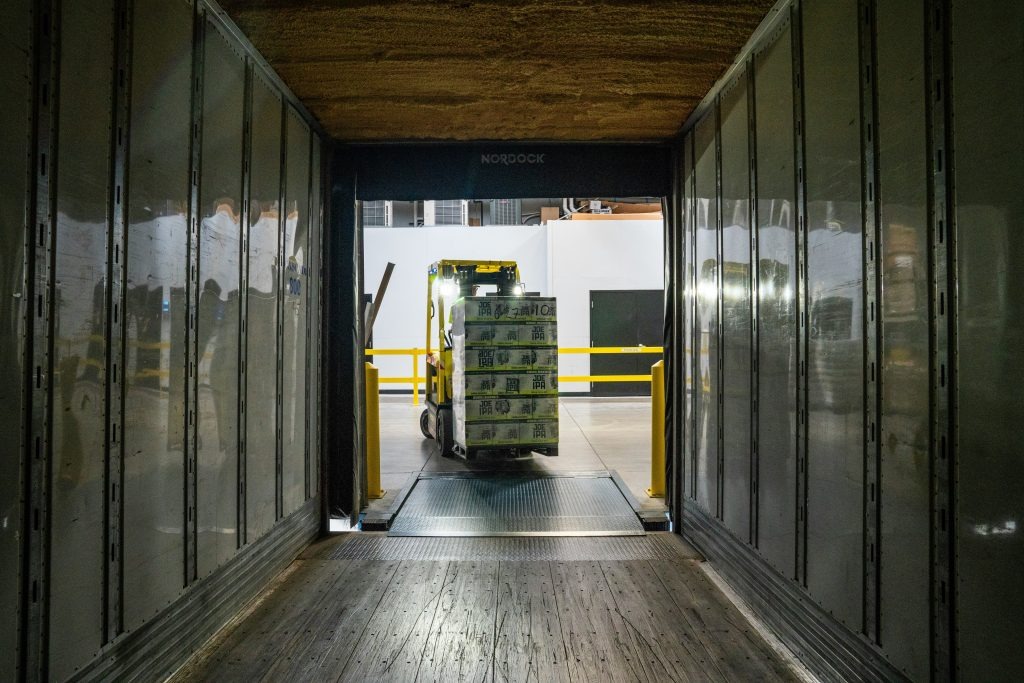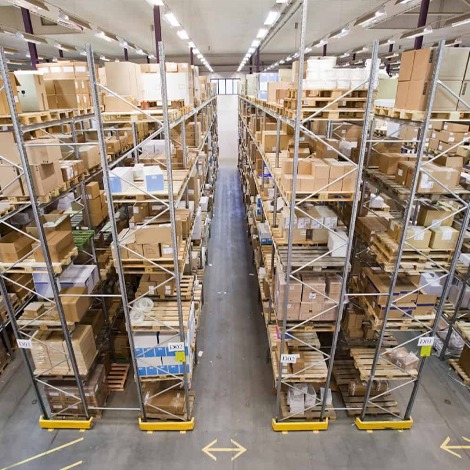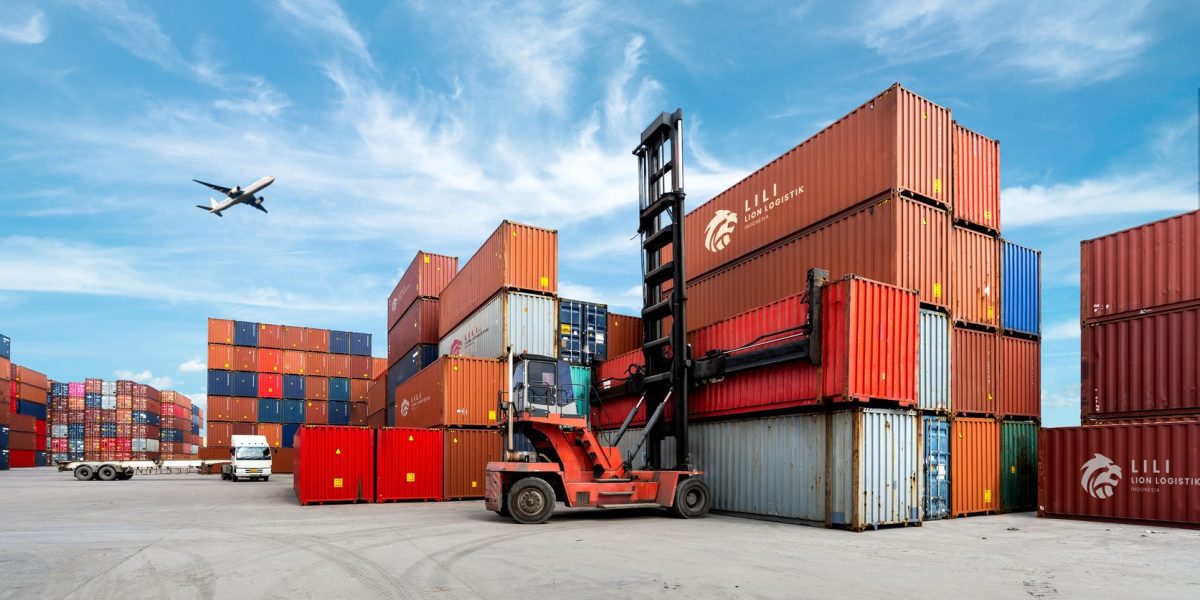As an e-commerce or retail business, one of your biggest concerns is to keep an eye on your orders and how fast they can reach your customers. Every business dreams of having a loyal and satisfied customer base, but this calls for reliable fulfillment options that can follow through tight schedules and live up to customer expectations. It is indeed telling that nearly 48% of customers expect to receive packages within two working days.
Amid an ever-growing push for on-time delivery, businesses cannot afford to ignore order fulfillment. Cross docking logistics has emerged as a go-to choice for businesses looking to avoid long-term warehouse costs and move goods directly from inbound to outbound transportation. Here’s what you need to know about key cross-docking strategies to reduce costs and speed up deliveries.

What is Cross Docking and its Advantages for Businesses
Cross docking logistics refers to a process where goods from an inbound delivery vehicle are unloaded and immediately transferred onto an outbound shipment for delivery to the final customer. The underlying idea is to minimize storage or dwell time in warehouses and get products moving to their destinations. Cross-docking leads to a streamlined distribution process by doing unnecessary middle steps. By adopting cross docking logistics, organizations help make the distribution process more efficient and allow customers to enjoy faster delivery. Cross docking offers substantial business benefits, including ;
Improved Space Utilization
Cross docking allows businesses to use their space optimally by minimizing the space needed for warehousing. It, therefore, encourages companies to utilize the spaces in the most efficient way.
Faster Order fulfillment
The fact that products have less time in transit ensures that they are quickly redistributed to their final destinations. This results in faster rates at which orders are fulfilled, which, over time, reflects in improved customer satisfaction.
Improved Inventory Management
Cross docking logistics gives you greater control over your inventory to maintain low inventory levels while keeping up with changing customer demands
Cost-Efficiency
Warehouse cross-docking requires consolidating shipments and selecting the optimum transportation routes, which helps minimize fuel usage and overall traveling expenses.
Retain Product Integrity
With products spending less time in warehousing, the handling times are reduced, which reduces the risk of products getting damaged or lost during the distribution process.
Strategies to Implement Cross-Docking Successfully
Warehouse costs typically take up a significant portion of business costs, whether it’s on rent or outsourced to a 3PL provider, and thus, the core idea behind cross-docking is to steer clear of warehousing whenever possible. Here’s an overview of 7 major strategies that can be employed for successful cross-docking logistics.
1. Just-in-time (JIT) cross-docking
A just-in-time, or JIT, shipping method involves loading incoming shipments from a supplier onto an outbound vehicle for the final customers. By doing so, shipments no longer have to go through the warehouse, which helps to keep the transportation process lean. This is to say that the distribution facility is not meant for storage but merely to facilitate the transfer of products between inbound and outbound vehicles so that they can be hauled for last-minute delivery to their final destinations. This dramatically reduces the transit time for minimum delays and incurs lower warehousing costs.
2. Opportunistic Cross-Docking
This cross-docking strategy aims to tap into opportunities provided by real-time demand to immediately transfer products directly from their inbound transportation to outbound shipping docks. Supposedly, a shipment of 100 shoes just arrived at a warehouse to satisfy an urgent demand in retail stores. In this case, the incoming products would be placed directly onto an outgoing truck to be delivered to cater to the demand in real-time. This causes delivery to accelerate as products no longer have to be stored or sorted out.

3. Flow-through distribution
As the name suggests, this is a constantly flowing process that eliminates the need for warehousing to speed up delivery times. Here, products land at a distribution center or a cross-docking warehouse from a manufacturer, where they are sorted and packaged before heading out for their final destination. This means products are spared the hassle of going to a central location first, minimizing storage and handling time. Once sorting is done, they are loaded onto trucks standing at outbound dock doors and start moving for their final journey.
4. Hybrid cross-docking operations
Cross docking operations can work stand-alone, or they may be combined with traditional warehousing to yield a hybrid solution. In this hybrid cross-docking technique, some items will be stored temporarily while others will be shipped immediately. This scenario is most likely to be used when a company boasts an extensive inventory of products, but out of these, some are in high demand. By using this technique, companies can store the extra items in the warehouse and release them only when they are ready for the market.
5. Consolidation method
Consolidation in the context of cross-docking warehouses involves combining smaller unit loads into a larger shipment for further delivery. These loads may be from different suppliers, but they are placed together on a larger outbound shipment, which reduces per-unit transportation costs and saves time compared to shipping individually.
6. Deconsolidation
This method can be considered the reverse process of consolidation. Under this arrangement, a full shipment is broken down into its composite shipments and assigned a new label to be dispatched in multiple delivery vehicles.
FAQs
1. How can companies ensure smooth cross-docking operations?
For streamlined operations, it is necessary to have a well-designed warehouse design and layout, apply accurate and up-to-date labels on products and containers, and utilize warehouse management systems. Sticking to accurate shipment schedules and a workforce with know-how in efficient handling processes further contributes to operational efficiency.
2 What are the biggest challenges for cross-docking companies, and how can they be addressed?
What makes cross-docking services so challenging are unpredictable delays, a lack of coordination, or a mismanaged inventory. Leveraging flexible transportation options, integrating real-time visibility tools, and strengthening supplier relationships are ways to combat these challenges and improve shipment accuracy.
3. What strategies can improve delivery speed in cross docking?
Delivery speed can be improved by replacing manual processes with automated sorting systems, tracking shipments in real-time, and adopting AI-driven optimization to ensure goods are processed and dispatched faster. Close coordination with suppliers and cross-docking companies also minimizes delays and boosts efficiency.
4. How does cross-docking help businesses save on warehousing costs?
With Cross docking services, long-term warehousing is no longer needed as shipments can be transferred directly from inbound to outbound trucks. This can result in significant savings for businesses by reducing storage fees, labor costs, and other inventory-holding expenses.
Conclusion
Cross docking logistics has brought about no less than a paradigm shift by offering prospects of reduced costs and faster turnaround times to give businesses a distinct competitive edge. In today’s dynamic marketplace, businesses can gain significant benefits from cross docking provided they plan strategically, utilize technology smartly, and adopt a collaborative approach across the supply chain. By embracing cross-docking, businesses cannot only add to their operational efficiency but improve customer service in the long term.
Are you looking for cross docking near me? As Miami’s leading Cargo & Freight Company, Accurate Trailers boasts a team of skilled delivery to ensure your freight reaches its end destination quickly and safely. Contact us today to get a quote or learn more about how we provide full logistics support from start to finish.
Popular Posts

November 20, 2025

November 14, 2025

November 11, 2025
Post A Comment